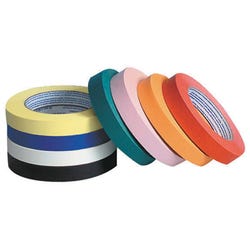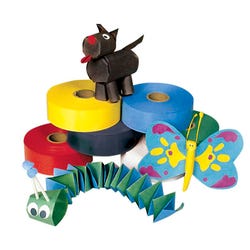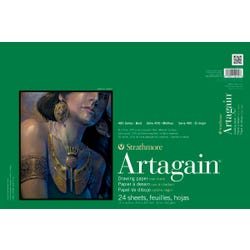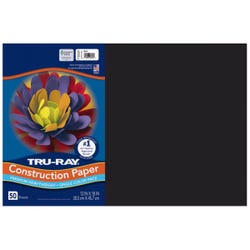Fanciful Fish

Description
At the beach, the aquarium or even the dentist's office, kids are fascinated by the vivid colors, interesting shapes and intricate patterns of tropical fish. These creatures' varying characteristics teach students about habitat and adaptation. Your students can create 3-D fish of their own with brilliantly colored Crayola® products that "pop" against a black paper background.
Objectives
- Students will create a colorful fish to hang from the ceiling.
- Students will create a colorful fish to hang from the ceiling. Students will observe the varying traits and adaptations of fish from different habitats.
- Students will observe the varying traits and adaptations of fish from different habitats.
Supplies Needed
- Crayola<sup>®</sup> Twistables<sup>®</sup> Slick Stix, 12-color set
Supplies Needed
Crayola® Twistables® Slick Stix, 12-color set 1293657
- Crayola<sup>®</sup> Color Sticks Woodless Pencils, 24-color set
Supplies Needed
Crayola® Color Sticks Woodless Pencils, 24-color set 1290583
- Crayola<sup>®</sup> Washable Window Crayons, 5-color set
Supplies Needed
Crayola® Washable Window Crayons, 5-color set 1334626
- Strathmore<sup>®</sup> Artagain<sup></sup> Recycled Dry Media Drawing Paper, 12"x18" black pad
Supplies Needed
Tru-Ray Construction Paper, 12 x 18, Black 054150
- Colored Paper Art Tape, 10-roll assortment
Supplies Needed
Chenille Kraft 8-color Masking Tape Set, Set of 8 1319021
- Recycled paper
Chenille Craft Colored Masking Tape, 60 yards, Black 309339
- String
- Photos and drawings of fish from books and magazines
- 3"x12" strips of tag board (optional)
Standards
Standard #1:
CONTENT Standard #1: Understanding and applying media, techniques and processes
CONTENT Standard #6: Making connections between visual arts and other disciplines
Standard #6:
Making connections betweenvisual arts and other disciplines
Instructions
Teacher Preparation
Teacher Preparation: Gather photographs and drawings of fish and borrow fish books from the school library to trigger your students? imaginations.
1
Discuss the shapes of fish, pointing out similarities and differences between various types.
Gather photographs and drawings of fish and borrow fish books from the school library to trigger your students' imaginations.
2
Draw the outline of a fish on black paper. Exaggerate its width. Make the narrowest part of the tail wide enough to stuff.
3
Draw the outline of a fish on black paper. Exaggerate its width.Make the narrowest part of the tail wide enoughto stuff.
4
Cut out the fish through two sheets of paper. With younger children, cut out one fish, trace it on another sheet of paper, and cut again.
5
Secure the fish?s two sides together with paper tape. Cut the tape into simple shapes, fold in half, moisten and place around the edge. (Colored tape will add a decorative touch; black tape will be nearly invisible.) Use staples with younger children or to save time. Leave a six-inch opening to insert stuffing later.
6
Secure the fish's two sides together with paper tape. Cut thetape into simple shapes, fold in half, moisten and place around the edge. (Colored tape will add a decorative touch; black tape will be nearly invisible.) Use staples with younger children or to save time. Leave a six-inch opening to insert stuffing later.
7
Color the fish as desired, avoiding the edge of the opening so paper tape will stick after stuffing. Cut a tag board stencil to create patterns as on the illustration and to scallop the tail if desired.
8
Repeat on reverse side.
9
Crumple recycled paper and stuff it into the opening, being careful not to overfill the fish.
10
Use paper tape to secure the opening, coloring it if desired to complete the design.
11
Punch a hole at the top of the fish and suspend with string.







